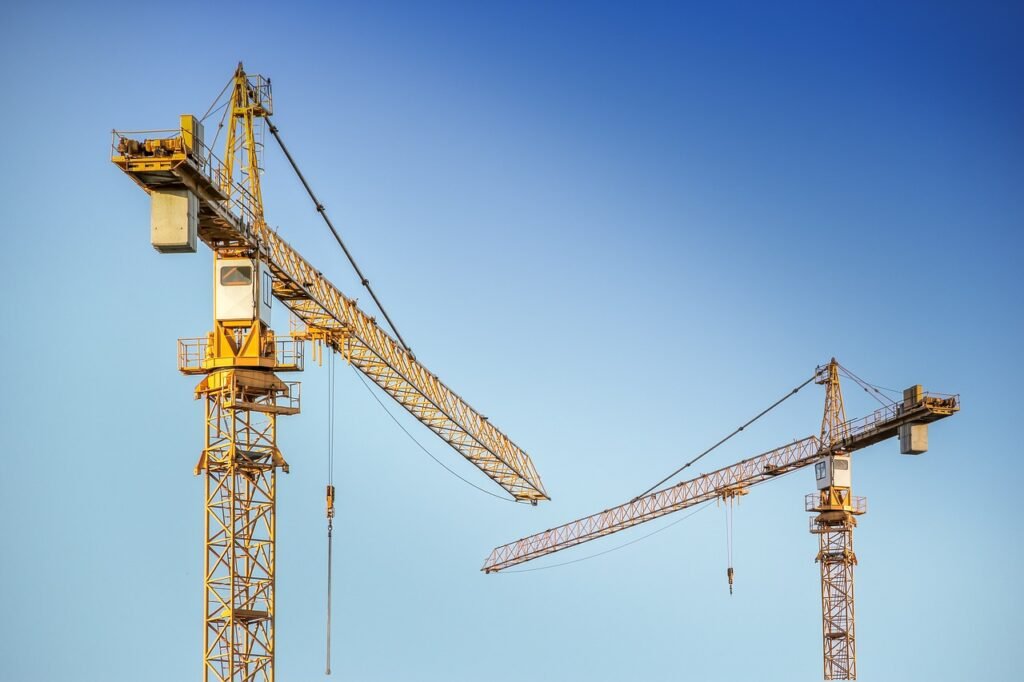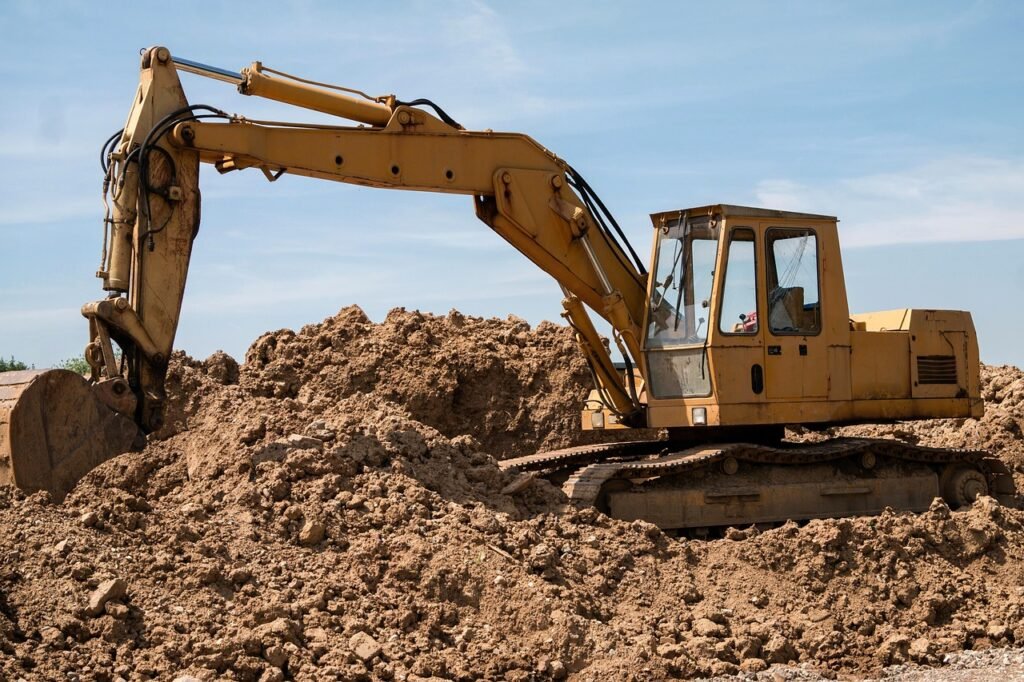

A construction site is a dynamic environment where buildings, roads, and other structures are built. It’s a place where various activities take place, involving different tools, machines, materials, and workers. Understanding the vocabulary related to a construction site is important for both workers and learners to navigate this environment safely and effectively. Here’s a detailed guide to help you become familiar with the common terms used on a construction site.
Key Areas on a Construction Site
- Foundation – The base of a building, usually made of concrete, that supports the structure.
- Excavation Site – The area where digging and earthmoving take place to make way for foundations or underground work.
- Work Zone – A designated area where workers are performing construction tasks.
- Cranes – Large machines used to lift heavy materials like steel beams and concrete slabs.
- Scaffolding – Temporary structures used to support workers and materials while constructing or repairing buildings.
- Building Site – The location where construction activities are happening.
- Surveying Area – A section where measurements are taken to ensure the structure is built according to specifications.
- Material Storage Area – An area on the site where materials such as bricks, steel, and timber are stored.
- Safety Perimeter – A barrier or fencing around the construction site to keep unauthorized people out and ensure safety.
- Office Trailer – A portable office placed on the construction site for the manager or supervisors to work and plan.
Construction Materials and Supplies
- Concrete – A building material made from cement, sand, and gravel, often used for foundations and floors.
- Cement – A powdery substance used to make concrete, mortar, or plaster.
- Bricks – Small, rectangular blocks made of clay or concrete used in building walls.
- Steel Reinforcement – Steel bars or mesh used to strengthen concrete in construction.
- Wood – A construction material used for framing, beams, and flooring.
- Plaster – A material used for coating walls and ceilings.
- Insulation – Materials like foam or fiberglass used to keep buildings warm or cool.
- Glass – Used for windows and sometimes walls.
- Tiles – Thin, flat pieces of material used for covering roofs, floors, and walls.
- Pipes – Tubes used for plumbing systems, including water supply and drainage.
Construction Equipment and Tools
- Excavator – A large machine used for digging, lifting, and moving materials.
- Bulldozer – A heavy vehicle used for clearing land and moving dirt and rubble.
- Backhoe – A digging machine with a scoop at one end and a backhoe for lifting material.
- Forklift – A machine used for lifting and moving heavy materials around the site.
- Concrete Mixer – A machine used to mix cement, sand, and water to create concrete.
- Hammer – A hand tool used for driving nails and shaping materials.
- Wrench – A tool used to tighten or loosen bolts and nuts.
- Drill – A tool used for making holes in wood, metal, or concrete.
- Shovel – A tool used for digging, lifting, or moving soil, gravel, or other materials.
- Trowel – A small hand tool used for spreading and smoothing mortar.
Workers on a Construction Site
- Construction Worker – A general worker who performs various physical tasks on the site.
- Site Manager – The person responsible for overseeing the entire construction site and managing the workers.
- Engineer – A professional responsible for designing and ensuring the technical specifications are followed during construction.
- Architect – The person who designs the structure and layout of the building.
- Carpenter – A worker who builds and installs wooden structures such as frames, doors, and windows.
- Mason – A worker who builds structures using bricks, stones, or concrete.
- Electrician – A worker who installs and maintains electrical systems.
- Plumber – A worker who installs and repairs pipes and plumbing systems.
- Roofer – A person who installs and repairs roofs.
- Painter – A worker who paints walls, ceilings, and other surfaces.
Construction Site Safety Terms
- Hard Hat – A helmet worn to protect the head from falling objects.
- Safety Boots – Sturdy footwear designed to protect feet from injury.
- Gloves – Worn to protect hands from cuts, burns, and chemicals.
- Safety Goggles – Protective eyewear to shield the eyes from dust, debris, or chemicals.
- High-Visibility Vest – A vest worn by workers to make them more visible to others, especially in low-light conditions.
- First Aid Kit – A set of medical supplies used to treat injuries on-site.
- Fire Extinguisher – A device used to put out small fires that may occur on-site.
- Fall Protection – Systems such as harnesses, guardrails, or nets to prevent workers from falling from heights.
- Emergency Exit – A safe route for workers to evacuate the site in case of danger.
- Hazardous Materials – Substances that are dangerous to health or safety, such as chemicals or asbestos.
Construction Processes
- Excavation – The process of digging and removing earth to prepare for the foundation.
- Foundation Pouring – The process of pouring concrete into molds to form the building’s foundation.
- Framing – Constructing the skeleton or framework of a building using wood or steel.
- Masonry – The process of laying bricks, stones, or concrete to build walls and structures.
- Welding – Joining metal parts together by applying heat to melt and fuse them.
- Plumbing – Installing pipes and fittings for water, gas, and waste systems.
- Electrical Wiring – Installing the electrical system, including wires and outlets, throughout the building.
- Insulating – Installing materials to control the building’s temperature and energy efficiency.
- Roofing – The process of constructing and covering the roof with materials like shingles or tiles.
- Finishing – The final stage of construction, which includes painting, installing flooring, and other cosmetic work.
Practice Questions
- What equipment is used for digging and earthmoving at a construction site?
- Name three roles of workers commonly found on a construction site.
- List five construction materials essential for building a house.
- What safety equipment is necessary for a construction worker?
- Describe the steps involved in building a structure from the foundation to the final finish.
📌 Learn More with www.commandsglobal.com
Gain more knowledge of construction-related vocabulary and communicate effectively in a building or manufacturing environment! 🏗️🛠️

